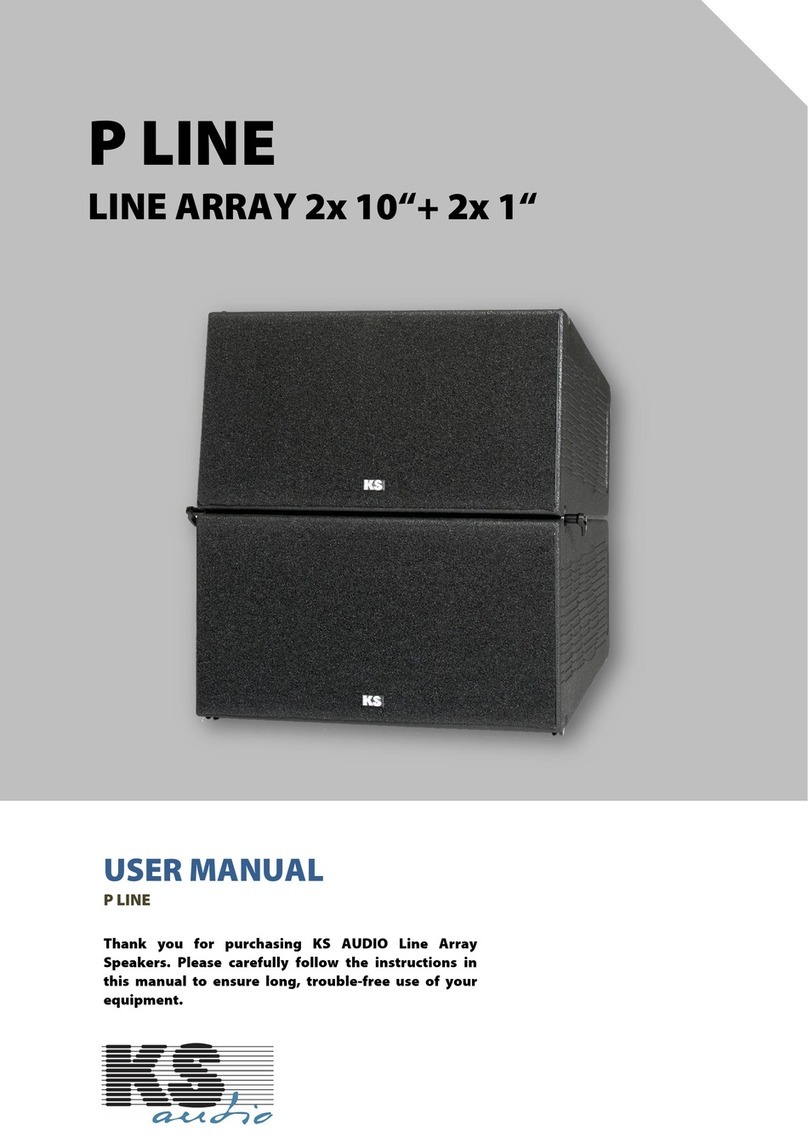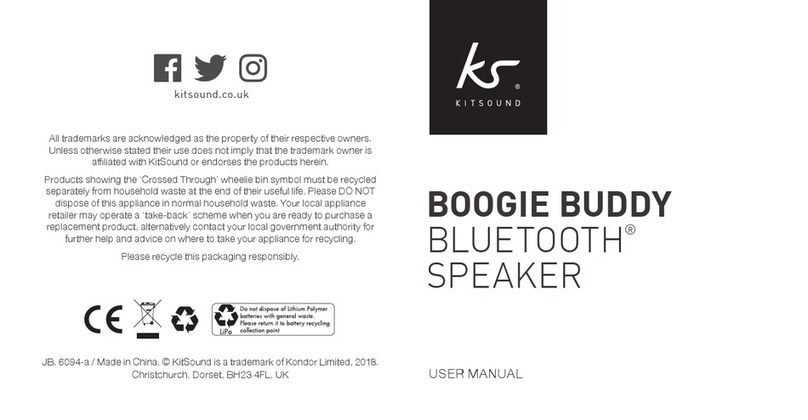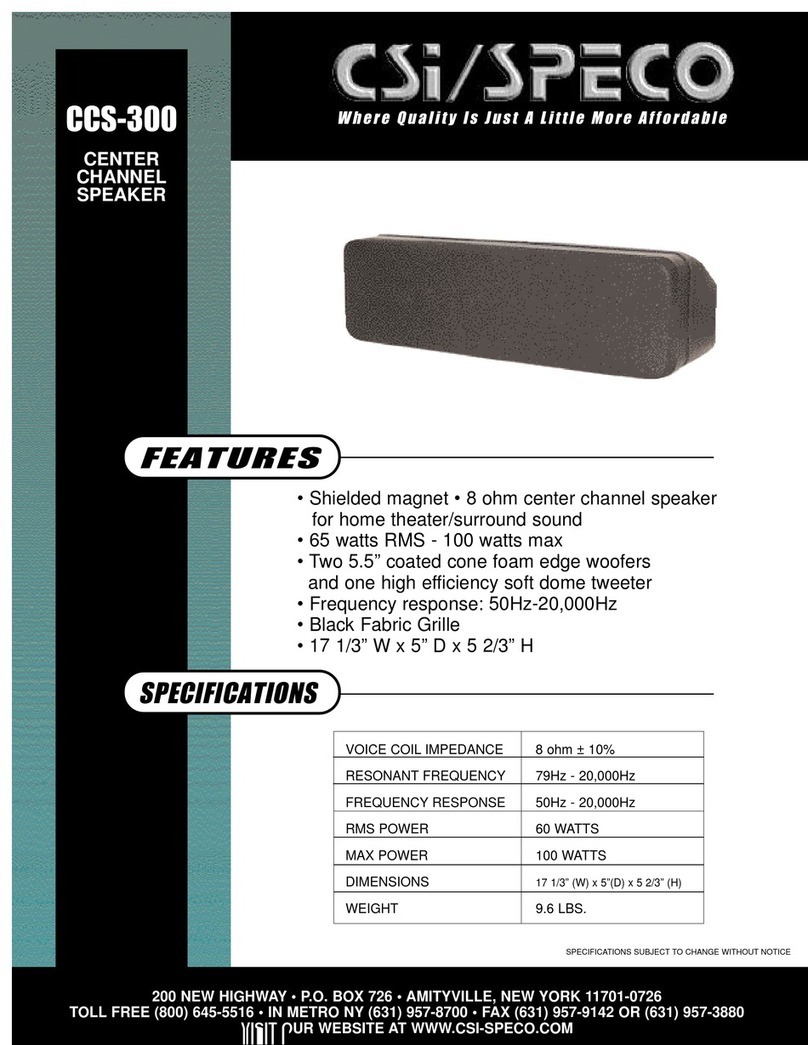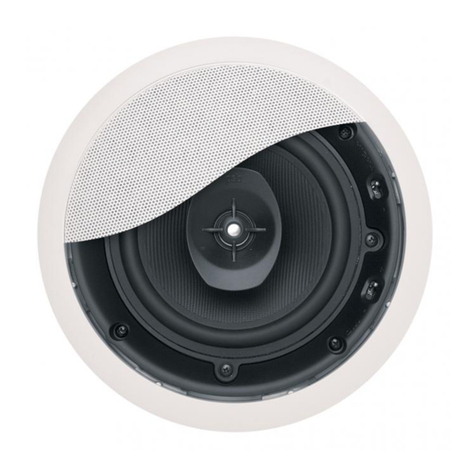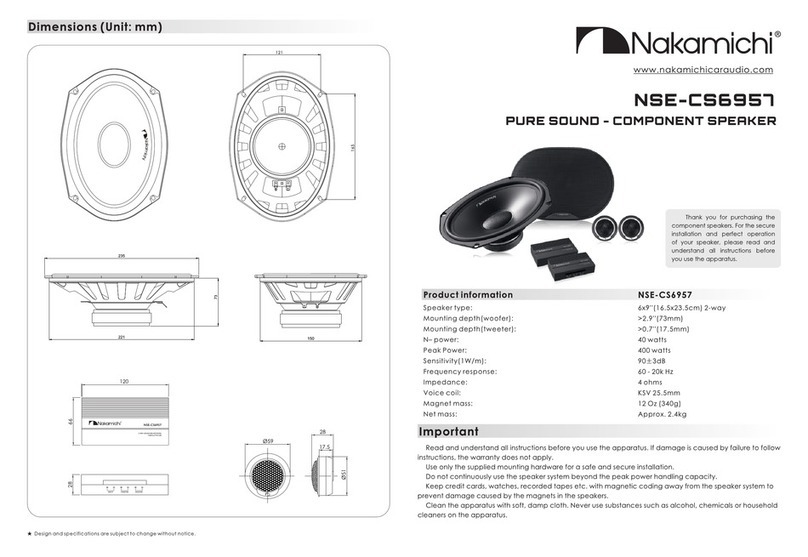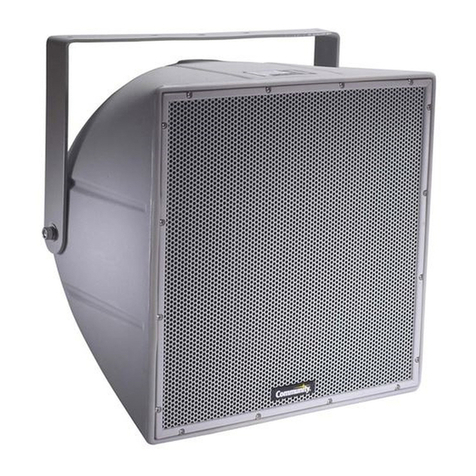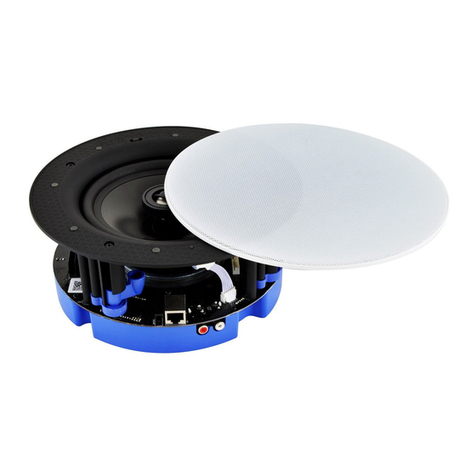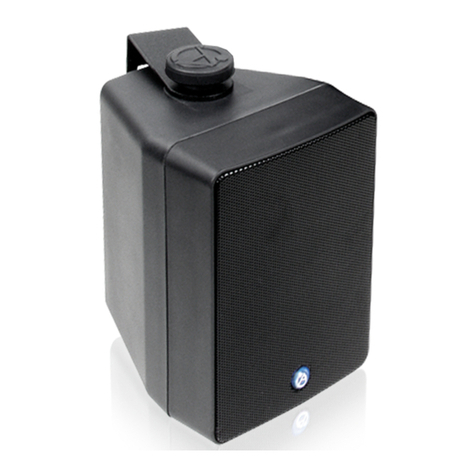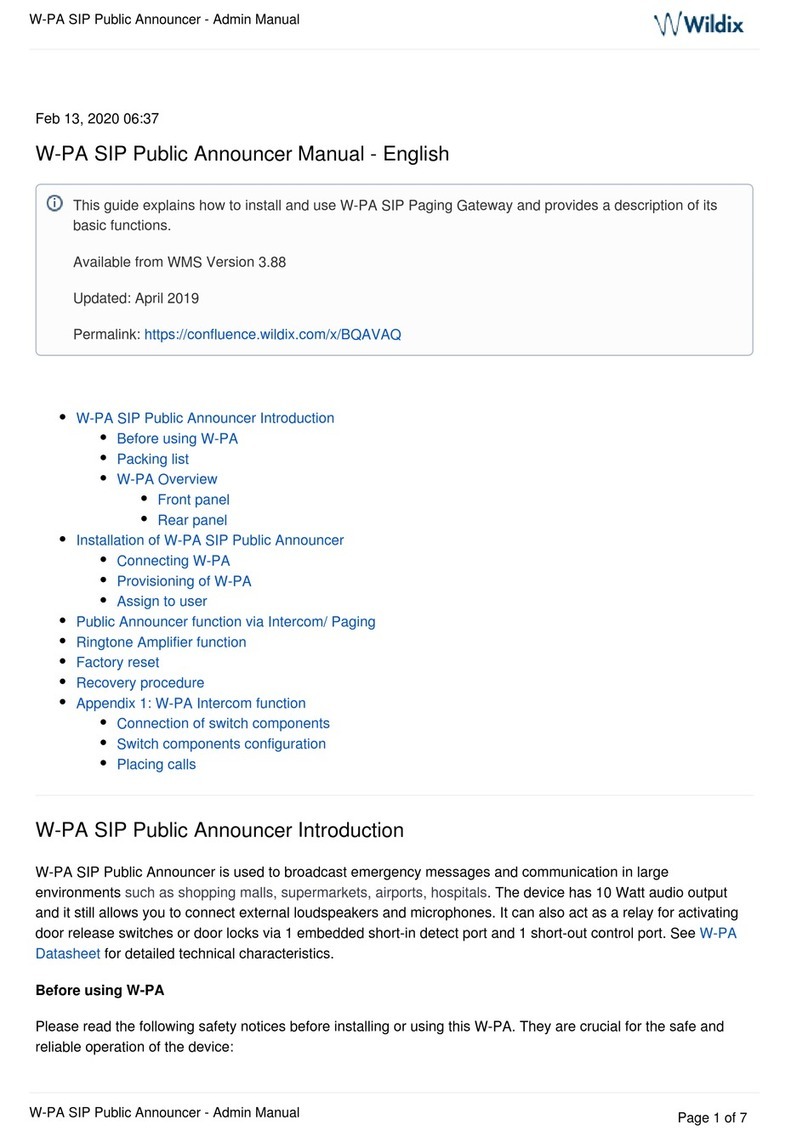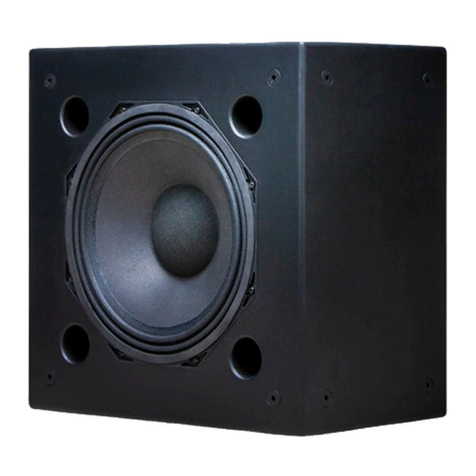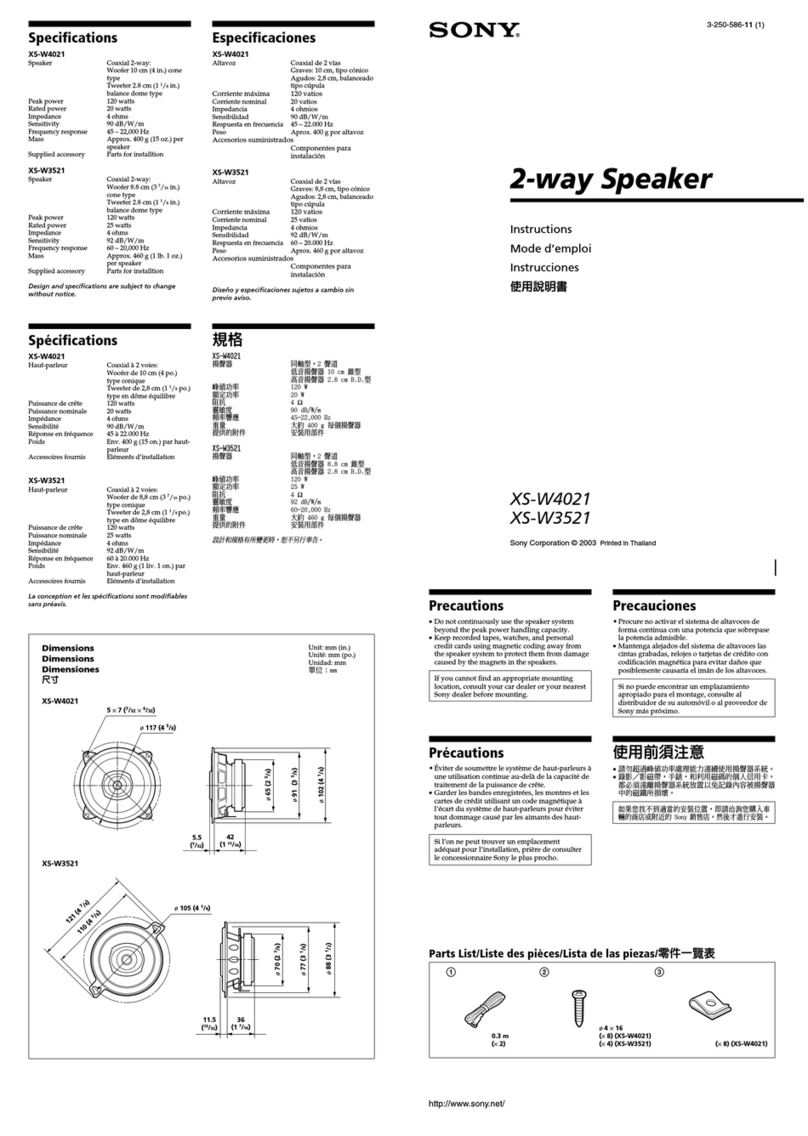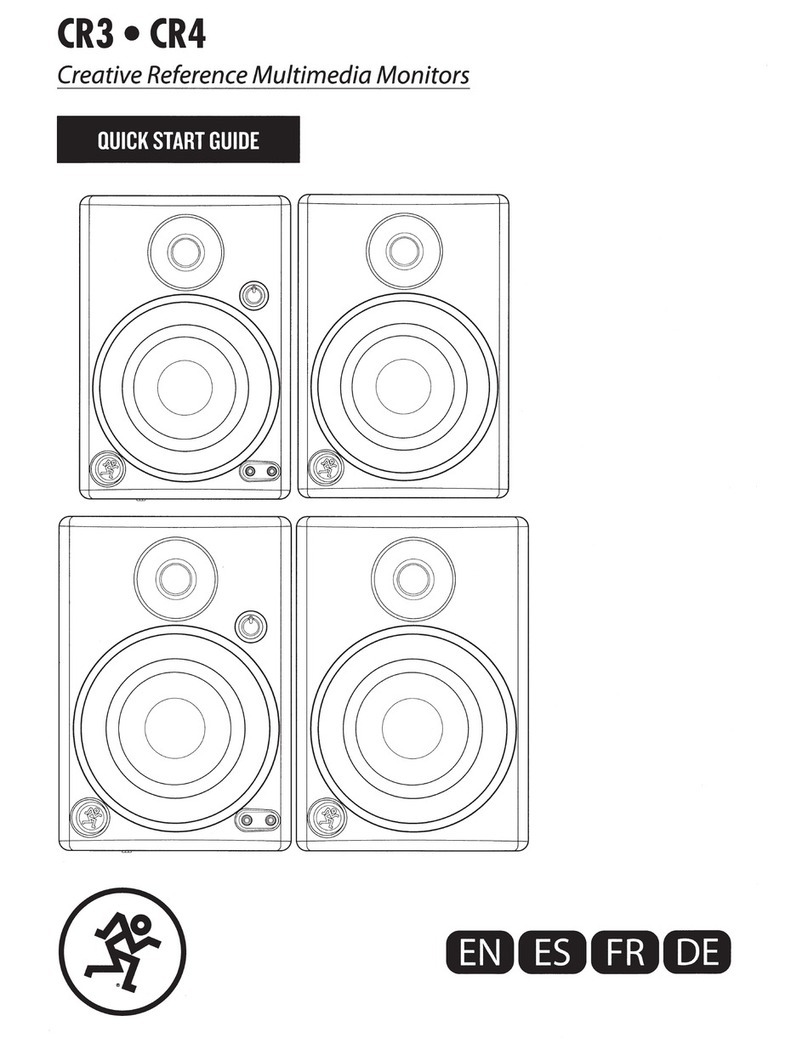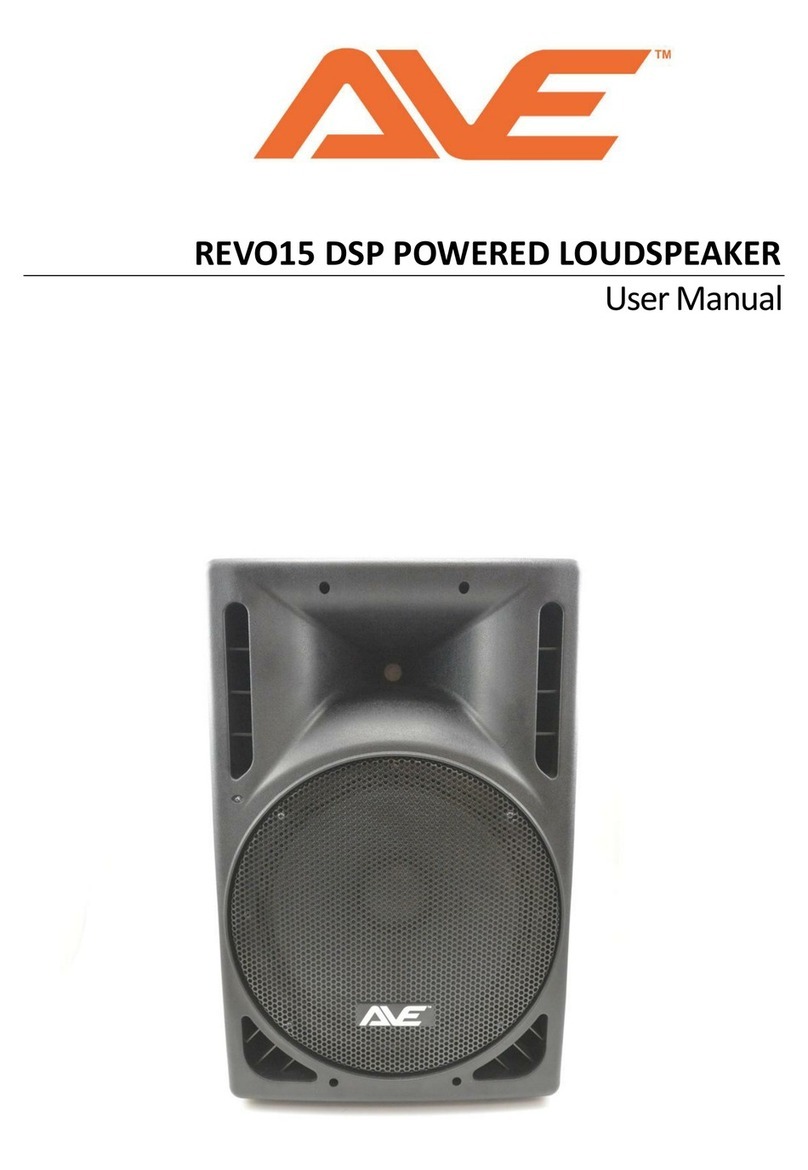KS LINE-MASTER User manual

OPERATION INSTRACTIONS
LINE-MASTER
Gesellschaft für digitale Studiotechnik mbH
ACTIVE, DIGITAL
STUDIO REFERENZ SPEAKER

KS DIGITAL
PARTNERS FOR DIGITAL STUDIO TECHNOLOGY
AM DÖRRWALD 5
D-66571 EPPELBORN / GERMANY
WWW.KSDIGITAL.DE
FURTHER INFORMATION AVAILABLE UNDER
WWW.KSDIGITAL.DE
KSDIGITAL GMBH
AM DÖRRWALD 5
D-66571 EPPELBORN / GERMANY
TEL: +49 6827 305915
FAX: +49 6827 305916
STAND: NOV. 1. 2006

Safety Instructions
1. Please read these instructions – You should read all information concerning safety
and operation before you use this equipment.
2. Please keep this manual – You may need it in the future.
3. Please observe the warnings – All warnings on the equipment and in this manual
should be observed by you in the interests of your own safety.
4. Please follow these instructions – All of the tips and instructions in this manual serve
to optimize the operation of this equipment and enhance your listening experience.
Please follow them.
5. Water and moisture – This equipment must not be used in wet environments, e.g. in
bathrooms or next to a swimming pool. Otherwise the danger of electric shock will
exist.
6. Ventilation – This product must be installed in such a way, that the necessary
ventilation is not impeded. For example, the equipment must not be operated on a
bed, sofa, carpet or similar surface where the cooling veins can be covered. The
equipment must not be placed in shelving or other locations that prevent a
circulation of air at the rear of the equipment.
7. Heat – Please do not install the equipment near a radiator or other, similar source of
heat.
8. The equipment is designed for use with an AC voltage of 230V / 50 Hz. Never
attempt to operate the equipment with another power supply.
9. Power cable – Please lay your power cable in such a way that it is not a hazard for
tripping over or can be damaged. In particular, be careful where cable connections
and sockets are located.
10.Ensure that neither foreign objects nor liquids come into contact with or penetrate
the equipment.
11. This equipment may only be serviced by properly qualified service personnel.
12.Repairs – Never attempt to open this equipment or otherwise try and service or
repair this equipment yourself unless this is described in this manual. Please leave
this to properly qualified service personnel.
13.In order to avoid electric shock, never use this equipment with a power extension
cable where the electrical contacts are not completely protected.
14.Earth – Please ensure that the earth and other connections to the equipment are not
impeded.
15.This equipment is designed to reproduce analogue audio signals. If the equipment
is not operated according to these instructions, the guaranty will not be applicable
and the user will be exposed to danger of electric shock.
Warning – To prevent electric shock, this equipment must not be exposed to rain or
moisture.

CONTENTS
2Safety Instructions
3CONTENTS
4SOUNDS RIGHT IN ROOM AND TIME
6KSDIGITAL – FEATURES OF THE LINE-MASTER REFERENCE MONITOR
7LINE-MASTER – THE REFERENCE THROUGH DIGITAL PRECISION
8FREQUENCY AND PHASE – DIAGRAMS
9REAR VIEW / CONTROLS
10 OPERATION
11 PARAMETER TABLES
12 SCREEN SHOT OF THE REMOTE CONTROL SOFTWARE
13 DIGITAL INTERFACE – CONNECTION DIAGRAM
14 TECHNICAL SPECIFICATIONS
3

SOUNDS RIGHT IN ROOM AND TIME
KSDIGITAL GESELLSCHAFT FÜR DIGITALE STUDIOTECHNIK MBH
For more than 20 years, KS has created world class sound transmission devices and has always
followed one aim; the reproduction of genuine and lifelike sound. KS products can be found in the
inventory of the most illustrious operas such as the Semper Oper Dresden, Alte Oper in Frankfurt,
Schauspiel Frankfurt, Kammerspiele Munich even in the parliament building in Berlin, the Reichstag
etc. They can be found in the sound studios of top artists and producers such as Stevie Wonder,
Herbert Grönemeyer, Xavier Naidoo / M. Herberger and many more. Naturally our products can
also be found in many radio stations, for example SWR, SR, Hitradio FFH and others in Germany
and abroad as well as many well known mastering studios. The guiding principles for the design of
KS DIGITAL products, was the ideal of sound neutrality and this has made them incorruptible
tools in judging acoustic reproductions and a pleasure to enjoy the results of those design efforts.
Many innovative approaches and patented processes have been developed by KSdigital in order
to get as near to the original as possible. We have developed the FIRTEC™ technology, a digital
phase correction filter, for the “system” studio loudspeaker (cabinet, mechanical and electrical
components), we have achieved a directional bass radiation with our dipole bass, with DMC™ we
have built a linear phase and time-aligned conus loudspeaker and with NEXT™, we have introduced
new technology that especially in the area of mastering, it brings the ear closer to the sound and
revolutionizes sound emission. In view of this we have to congratulate you on your excellent
choice of reference monitor from KS digital and wish you plenty of fun with the speaker.
TOTAL COMMITMENT TO DEVELOPMENT
During development of the Line-Master, we have consistently paid attention to the time aligned
emmission of audio signals. To achieve our goals we have searched for uncompromising solutions
for all areas involved in sound reproduction.
- in the active electronics:
The 300W output stages for each of the mid and high frequency ranges provide ample reserves
and the 500W for the regulated bass means the speaker is excellently equipped. Separate power
supplies for bass and mid/high ranges ensure that there is a clear separation of power and avoids
any bottlenecks.
- within the signal processing, filter and equalization areas:
A digital signal processor (DSP) includes a model of the physical characteristics of the speaker and
calculates 44 times in every millisecond the correct equalization of the complete speaker unit. This
means, that in the mid/high range area, an exact pre-control is possible without any control loop
errors and dead time. A floating point processor with a dynamic range for the calculation of
1500dB ensures highest accuracy and a higher than “analogue” resolution.
4

The FIRTEC™ equalization method we utilize, was developed and perfected by us in
the nineties. Since then it has been implemented very successfully in professional
studio monitoring systems in very different and famous users, including Herbert
Grönemeyer, Xavier Naidoo, Stevie Wonder, Semper Opera Dresden, Schauspiel Frankfurt
and many radio stations in Germany and abroad. The DA and AD converters we utilize
are state of the art and their dynamic range is much larger than required. Utilizing a
special gain stacking method, we reach a resolution of 27 bit, thereby not only surpassing
the signal-to-noise ratio of analogue technology but it also offers sufficient headroom to
control overloading. In the bass range, the unsurpassed DMC™ control ensures in an
analogue way that the musical reproduction is exact. The combination of digital signal
processing and DMC™ control makes an exact linearization of amount and phase
possible. The Line-Master effectively has a
phase characteristic of 0° or, expressed in musical terms: all frequencies exit the
speaker at the same time! Naturally, any individual room-specific or installation dependent
adjustments to the frequency characteristics can be made at any time.
- in the area of sound radiation behavior, utilizing the recently developed NEXT™
technology:
A newly designed element that irradiates cylindrical waves is responsible in the Line-
Master for the emission of mid/high range frequencies from 800Hz and upwards. A
cooperation with the Fraunhofer Institute for Applied Mathematics in Kaiserslautern,
Germany has permitted us to develop a slit shaped emitter of the highest quality with
an extremely powerful “motor”. The acoustic energy of a cylindrical wave field decreases
by 3dB for every doubling of the distance as opposed to the 6dB of a spherical wave.
In this way, the near field of the Line-Master extends to listening areas at otherwise too
greater a distance. On top of this, the sound is emitted directionally, resulting in fewer
reflections from walls and ceilings and more direct sound, giving a much more exact
reproduction with defined impulses and differentiated sound.
Vertical Radiation Behavior:
5

KSDIGITAL– FEATURES OF THE LINE-MASTER REFERENCE MONITOR
ANALOGUE INPUT:
Symmetrical XLR input (20dBu Head Room) utilizing 27Bit conversion technology.
DIGITAL INPUT:
AES3-Input for digital signals. The channel to be used is specified in the main selection menu by
selecting the appropriate box. The input sampling frequency is in the range of 30-110kHz.
INPUT CONTROL:
The stacked 27Bit converter works with a headroom of 20dBu. This enables safe listening and
those distortions caused by over loading above full volume levels are excluded. In case of an
inadvertent operation above the full volume scale, an in-built limiter will intercept a dangerous
overload of the box and will prevent destruction of the driver.
INPUT SWITCH:
Using the control on the rear side, it is possible to leaf through a series of installation parameters.
If a parameter requires changing, the control needs to be pressed and rotated until the desired
value is displayed. In this way, it is possible under “Digital In Left” or “Digital In Right” to choose
the required data input word that feeds the signal processor in DSP. If both input words are
activated, then a mono signal will be generated and reproduced.
REMOTE CONTROL:
The remote control permits a control of volume from the listening area without a reduction of
word length in the input signal.
There are 3 types of remote control:
- Per PC remote control software
This permits access to all parameters of the signal processor that are also available using
the controls on the rear side of the speaker cabinet.
- per analogue hardware controller
This is connected to the loudspeaker and drives a VCA input signal for the control of the
output stage’s amplification.
- per digital hardware controller
Similar to the PC software , this permits access to all parameters of the signal processor
that are also available using the controls on the rear of the speaker cabinet.
6

LINE-MASTER – THE REFERENCE THROUGH DIGITAL PRECISION
The Line-Master is an active 3.5 way studio monitor designed for up to high volumes.
The signal processing, such as equalization, cross-over and correction of the transient
behavior of the components, is taken care of completely at a digital level. The connection
to an existing, digital studio environment occurs digitally via the AES3 interface. An analogue
input is also possible. A high quality 27 Bit gain staging, Sigma-Delta converter with 64 bit
oversampling and a dynamic of more than 130dB is responsible for the conversion. The
digital signals are further processed utilizing a 60MHz floating point, Sharc-DSP in our
proprietary motherboards. This converts the 24-27Bit wide input data into a float word
with 32Bit Mantisse and 8Bit exponent that result in a theoretical dynamic of over 1500dB.
Overloading as well as scaling and rounding noises that maybe typical in similar equipment,
are excluded here. A patented process (Pat.Nr: 198 23 110) raises signals with a word
length of less than 24 Bit to an audiophile level. The external adjustable parameters ,
such as volume or filter etc., directly influence the process at the floating point level, so
that here, for example when adjusting the volume, no scaling malfunctions occur. On the
output side, the DSP works with two 24 Bit D/A converters connected to high performance
MOFSET output stages that have been equipped with hand selected transistors and work
with a bandwidth of 100kHz and a rise time of 80 V/us.
FEATURES OF DIGITAL SIGNAL PROCESSING
Digital signal processing must include the following:
-Separation of the signal’s components into treble, mid-range and bass.
-Equalization of the transmission behavior of the individual components.
- Protection against overloading
Every interference with the signal, like for example, a crossover filter or an equalization of
an individual speaker, not only makes the required change to the frequency characteristic
but also changes the impulse behavior of the system. With an analogue equalization, a
short impulse will automatically by smeared across the whole time axis and produce at
the end of the equalization a decaying oscillation of the impulse response. In addition, the
inertia of the membrane causes further oscillations of the membrane with every impulse.
All together this causes a right-angle at the signal input to be transformed into an unrelated
signal characteristic at the output. The Line-Master’s FIRTEC (Finite Impulse Response)
equalization in connection with DMC™ technology is free from such run-time distortions.
7

8
impulsrespons without FIRTEC - processing impulsrespons with FIRTEC - processing
amplituderesponse
withFIRTEC (red)
amplituderesponse
without FIRTEC (green)
phaseresponse
with FIRTEC (red)
phaseresponse
without FIRTEC (green)

9
Digital IN, OUT
Rotary control with two-line
display to set parameters
Remote Control IN
Mains Socket with
Fuse
Mainswitch
Remote Control OUT
Analogue IN

Operation
The Line-Master can be controlled either manually or using the WINDOWS software
ADM-REMOTE. The parameters that can be individual changed are visible in the display
of the amplifier and on the screen.
Manual Operation
The manual operation of the Line-Master occurs via a rotary knob with an additional
short-hub, push button function. The two-line display shows the parameter name and
its adjustable value.
After switching on, the text “KSdigital – Line-Master” appears.
By turning the knob to the left or right, the available parameters are displayed in turn.
By pressing the knob, the new value is selected and is immediately changed but only
saved as soon as the knob is released. If no further parameters are chosen, after
several seconds the display will return to its original text.
Remote Control
For comfortable operation, the PC Software ADMControl was developed. Via the serial
interface in your network or optionally, with a TCP/IP address, you can send data to
the controller or receive from there.
All adjustments that the loudspeaker permits, can be made remotely on the PC so
that with your laptop, a simple calibration of the speakers directly from your listening
position is possible.
A third possibility utilizes ADM-REMOTE, an optional hardware controller that puts the
display and control knob that are on the rear side of the speaker conveniently at your
disposal in a wire-connected remote control.
10

Description Function Range of Values
Volume Total volume 0dB … -31dB
Filter 1
Frequency X/26 Frequency band of Filter 127 frequency bands
Gain Relative level of the correction filter +6dB … -6dB
Q-Factor Frequency bandwidth 0.1,…, 5.0
Filter 2
Frequency X/26 Frequency band of Filter 127 frequency bands
Gain Relative level of the correction filter +6dB … -6dB
Q-Factor Frequency bandwidth 0.1,…, 5.0
Filter 3
Frequency X/26 Frequency band of Filter 127 frequency bands
Gain Relative level of the correction filter +6dB … -6dB
Q-Factor Frequency bandwidth 0.1,…, 5.0
Low shelving 80Hz EQ +6dB … -6dB
High shelving 12kHz EQ +6dB … -6dB
Distance shift Speaker delay In meter
Subwoofer Switches between 20Hz and 35Hz fgu Active / Not active
Phase reversal Phasing shift of 180° Active / Not active
Digital In Left Turns on left data word Active / Not active
and turns off analogue input
Digital In Right Turns on right data word Active / Not active
and turns off analogue input
Update FIR Filter Facilitates transfer of a new filter Active / Not active
The 27 frequency bands (terz bands) appear in the display in the following order:
40 Hz, 50 Hz, 63Hz, 80Hz, 100 Hz, 125 Hz, 160 Hz, 200 Hz, 250 Hz, 315 Hz, 400 Hz, 500 Hz,
630 Hz, 800 Hz, 1000 Hz, 1250 Hz, 1600 Hz, 2000 Hz, 2500Hz, 3150 Hz, 4000 Hz, 6300 Hz,
8000 Hz, 10000 Hz, 12500 Hz, 16000 Hz.

PC Screen shot of the ADMControl Software

digital source
CONNECTION BY DIGITAL OPERATION, REMOTE CONTROL
Connection to the next Line-Master
digital IN socket
13
Connection to the
“RC-IN” socket
in the next Line-
Master
Remote control to
control parameters
In a studio environment, a digital connection is made by connecting the AES signal with
the Digital IN socket of the ‘right’ speaker. The left speaker is connected to the active
Digital OUT socket of the first speaker. The digital source must be connected to the speaker
with the ‘right digital In’ in paramter menue.

14
technical informations:
frequency range:
20 - 24000 Hz (+/-3dB)
sensitivity:
+20dBu
AD / DA converter:
27 bit/192KHz sigma delta, 64x oversampling, gainstacking
analog IN
XLR-symmetric
digital IN, OUT:
optional: AES3 format, 32 - 110 KHz,
XLR-symmetric
DSP:
60 MHz 32 bit floatingpoint, 1500 dB dynamic
process:
FIRTEC equalization, FIR-crossover, limiter, 3 parametrc EQs, 2 FIR- presets, digital
floatingpoint gain control, delay
room equalization:
bass-shelving / high-shelving, 3 full parametric equalizer for fine tuning,
user room equalization
crossover:
80Hz, 400Hz, 800Hz FIR-Crossover
power (peak):
500W Bass
300W Mid
300W High
Table of contents
Other KS Speakers manuals
